Products
Products

Product Overview:
Ball valve, the opening and closing element (ball) is driven by the valve stem and rotates around the axis of the ball valve. It can also be used for fluid regulation and control, among which the hard sealed V-shaped ball valve has strong shear force between its V-shaped core and the metal valve seat of the welded hard alloy, especially suitable for media containing fibers, small solid particles, etc.
Nominal diameter: 10mm~1000mm and 1/2 "~60"
Working pressure: 1.0MPa~16.0MPa/150Lb~1500Lb/10K~160K
Working temperature: -196 ℃~816 ℃
Adopting standards: GB, DIN, API, ANSI, JIS, BS, etc

Product Overview:
A gate valve is an opening and closing component, and its movement direction is perpendicular to the fluid direction. A gate valve can only be fully opened and fully closed, and cannot be adjusted or throttled. Gate valves are sealed by the contact between the valve seat and the gate plate, and the sealing surface is usually welded with metal materials to increase wear resistance, such as 1Cr13, STL6, stainless steel, etc. There are rigid gate valves and elastic gate valves. According to the different gate valves, gate valves are divided into rigid gate valves and elastic gate valves.
Nominal diameter: 10mm~1000mm and 1/2 "~60"
Working pressure: 1.0MPa~16.0MPa/150Lb~1500Lb/10K~160K
Working temperature: -196 ℃~816 ℃
Adopting standards: GB, DIN, API, ANSI, JIS, BS, etc
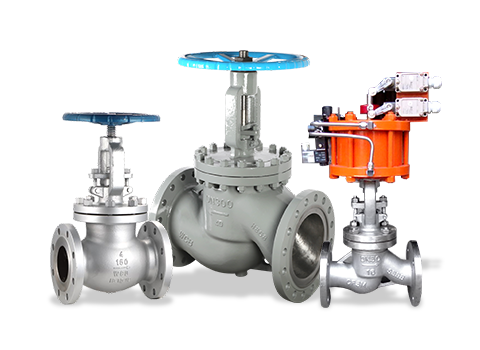
Product Overview:
Globe valve, also known as shut-off valve, belongs to the forced sealing type valve. Therefore, when the valve is closed, pressure must be applied to the valve disc to force the sealing surface not to leak. When the medium enters the valve from below the valve disc, the resistance that the operating force needs to overcome is the frictional force between the valve stem and the packing, as well as the thrust generated by the pressure of the medium. The force required to close the valve is greater than the force required to open it, so the diameter of the valve stem should be larger, otherwise the valve stem bending fault may occur. There are three types of connections: flange connection, threaded connection, and welded connection.
Nominal diameter: 10mm~1000mm and 1/2 "~60"
Working pressure: 1.0MPa~16.0MPa/150Lb~1500Lb/10K~160K
Working temperature: -196 ℃~816 ℃
Adopting standards: GB, DIN, API, ANSI, JIS, BS, etc
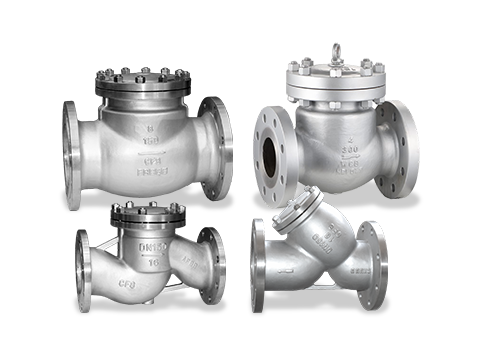
Product Overview:
A check valve refers to a type of valve whose opening and closing components are circular valve discs that act by their own weight and medium pressure to block medium backflow. It belongs to the category of automatic valves, also known as check valves, one-way valves, return valves or isolation valves. A filter is an indispensable device on the pipeline for conveying media, usually installed at the inlet of pressure reducing valves, relief valves, constant water level valves, and other equipment such as square filters.
Nominal diameter: 10mm~1000mm and 1/2 "~60"
Working pressure: 1.0MPa~16.0MPa/150Lb~1500Lb/10K~160K
Working temperature: -196 ℃~816 ℃
Adopting standards: GB, DIN, API, ANSI, JIS, BS, etc
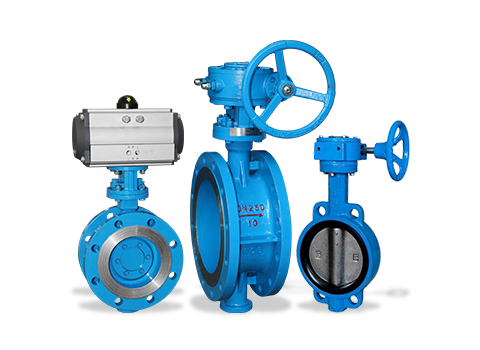
Product Overview:
Butterfly valve, also known as flap valve, is a type of regulating valve with a simple structure that can be used for on/off control of low-pressure pipeline media. Butterfly valve refers to a valve whose closing element (valve disc or butterfly plate) is a disc that rotates around the valve axis to achieve opening and closing.
Valves can be used to control the flow of various types of fluids such as air, water, steam, various corrosive media, mud, oil, liquid metals, and radioactive media. It mainly plays a role in cutting off and throttling on pipelines. The butterfly valve opening and closing component is a disc-shaped butterfly plate that rotates around its own axis inside the valve body to achieve the purpose of opening, closing, or adjusting.
Nominal diameter: DN40~DN4000mm and 1 1/2 "~160"
Nominal pressure: 0.25 MPa~42.0 MPa/150LB~2500LB
Valve body materials: WCB, LCB, CF8, CF8M, GGG40, etc
Operation modes: manual, pneumatic, electric, electro-hydraulic
Connection methods: flange, butt welding, clamp, lug
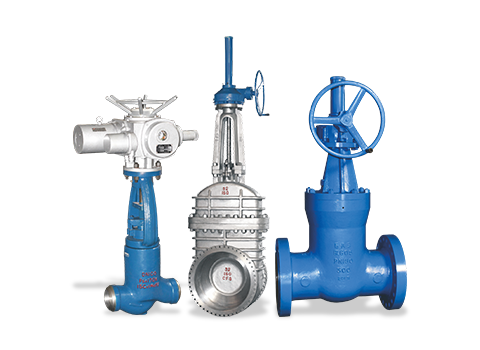
Product Overview:
Power station valves, also known as power station specific valves, are mainly suitable for cutting off or connecting pipeline media in various systems of thermal power plants. Applicable media: non corrosive media such as water and steam. The characteristics of power station valves compared to other valve products are high temperature and high pressure, unique self sealing design, and the higher the pressure, the more reliable the seal. Due to its unique performance, technical characteristics, and working conditions, the product has also developed unique features that cannot be replaced by other products.
Nominal diameter: DN50~DN1000mm and 2 "~40"
Nominal pressure: 1.0MPa~76.0 MPa/150LB~4500LB
Valve body materials: WCB, WC6, WC9, C5, C12A, A105, F11, F22F91, etc
Operation modes: manual, pneumatic, electric
Connection method: flange, butt welding

Product Overview:
A safety valve is a special valve that is in a normally closed state when the opening and closing components are subjected to external forces. When the pressure of the medium inside the equipment or pipeline exceeds the specified value, the valve discharges the medium outside the system to prevent the pressure of the medium inside the pipeline or equipment from exceeding the specified value. Safety valves belong to the category of automatic valves, mainly used in boilers, pressure vessels, and pipelines to control pressure not exceeding the specified value, playing an important protective role in personal safety and equipment operation. The safety valve must undergo a pressure test before it can be used.
Nominal diameter: DN10~600mm and 1/2 "~25"
Work pressure: 0.06~42.0MPa/150lb~2500lb
Working temperature: -196 ℃~580 ℃
Manufacturing standards: ANSI, APIDIN, BS, JIS, GB, etc
Product Material: WCB、WC6、WC1、WC9、ZGCr5Mo、ZG15Cr1Mo1VCF8、CF8M、CF3、CF3M、12CrMoV、ZG1Cr18Ni9Ti、ZG1Cr18Ni12M02T class
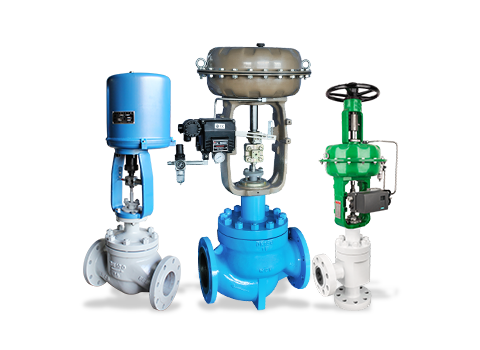
Product Overview:
Regulating valves generally refer to control valves, which are composed of two main components: valve body assembly and actuator assembly (or actuator system). They are divided into four series: single seat series control valves, double seat series control valves, sleeve series control valves, and self operated series control valves. The variations of the four types of valves can lead to many different applicable structures, each with its own unique applications, characteristics, advantages, and disadvantages. Regulating valves can be widely used for precise control of various situations such as different temperatures, pressures, and flow rates.
Nominal diameter: DN20-DN200mm
Valve body material: stainless steel, cast steel, cast iron, forged steel
Control methods: switch type, regulating type, pneumatic control, electric control, direct, three-way, multi-channel
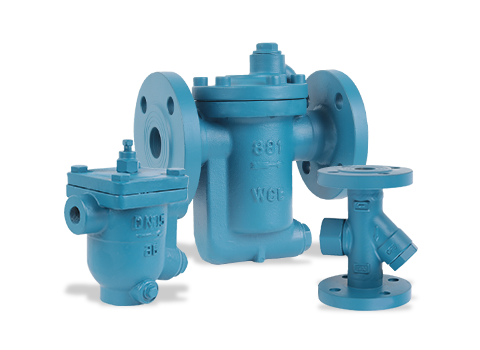
Product Overview:
A drain valve generally refers to a steam trap, also known as an automatic drain or condensate drain, which is used in steam systems and gas systems. The steam trap is installed at the end of the steam heated pipeline, and its function is to continuously discharge the condensed water in the steam heated pipeline to the outside of the pipeline.
Most steam traps can automatically recognize steam and water (excluding thermal static type), thus achieving the purpose of automatic blocking and drainage.
Nominal diameter: DN15~DN150mm
Nominal pressure: 0.6Mpa, 1.0Mpa, 2.0Mpa, 2.5Mpa, 4.0Mpa, 5.0Mpa
Application scope: The product is widely used in industries such as petrochemicals, food and pharmaceuticals, and power plants, playing a significant role in energy conservation and emission reduction.
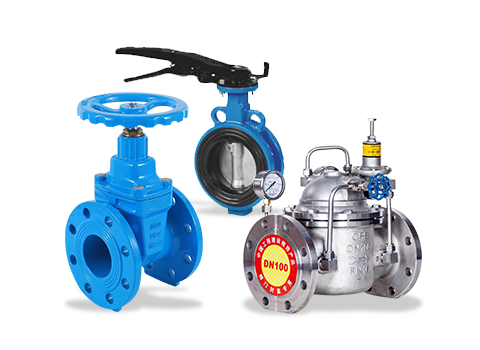
Product Overview:
Hydraulic control valve (valve for water pressure control) generally refers to the water pump control valve, which is the valve for water pressure control. The water pump control valve consists of a main valve and its attached conduits, guide valves, needle valves, ball valves, and pressure gauges. According to different usage purposes, functions, and locations, it can be evolved into remote control float valves, pressure reducing valves, slow closing check valves, flow control valves, pressure relief valves, hydraulic electric control valves, water pump control valves, etc. This type of valve should generally be installed horizontally in pipelines.
Nominal diameter: DN20~DN600mm
Medium characteristics: Cold water, hot water, sewage or particulate media, choose corrosion-resistant materials (such as stainless steel, ductile iron)
Manufacturing standards: DIN, ANSI, API, JIS, BS, NF, and GB, etc
Application scope: The product is widely used in water treatment, power, petroleum, chemical, nuclear power, construction, municipal engineering and many other fields, and is widely recognized by users.
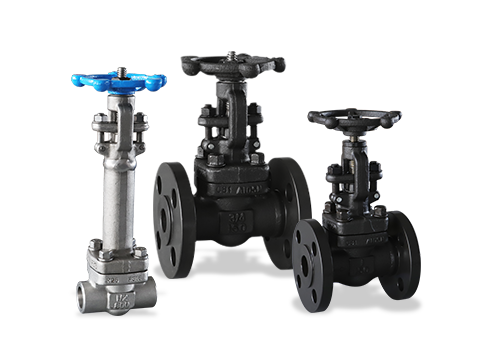
Product Overview:
Forged steel valve refers to a valve device suitable for cutting off or connecting pipeline media on various systems of thermal power plants.
Applicable media: non corrosive media such as water and steam. The characteristics of forged steel valves compared to other valve products are high temperature and high pressure, unique self sealing design, and the higher the pressure, the more reliable the seal. Due to its unique performance, technical characteristics, and working conditions, the product has also developed unique features that cannot be replaced by other products.
Nominal diameter: DN10~DN100mm and 1/2 "~4"
Nominal pressure: 1.0MPa~76.0 MPa/150LB~4500LB
Valve body materials: A105, LF2, F11, F304, F316, F321, etc
Operation modes: manual, pneumatic, electric, hydraulic
Connection methods: flange, butt welding, socket welding, thread

Product Overview:
Valves that use bellows as valve stem sealing elements are commonly used in situations where strict requirements are placed on valve stem sealing, such as in high vacuum applications and the nuclear industry. Use corrugated pipes instead of or in combination with the packing box on ordinary valves.
Nominal diameter:
Globe valve: DN10-DN600 and 1/2 "-16"
• Gate valve: DN10-DN800 and 1/2 "-32"
Work pressure: PN16-PN100/150Lb-600Lb
Applicable media: thermal oil, steam, chlorine gas, etc
Application scope: The product is widely used in industries, power stations, exhaust gas purification plants, natural gas, vacuum devices, ammonia, hot water, refrigeration systems, heating equipment, steam systems, etc.

Product Overview:
Knife gate valve is a type of cut-off valve with a wedge-shaped blade structure made of a gate plate, which opens and closes the pipeline through the vertical lifting motion of the gate plate in the direction of the fluid. Its core feature is that the gate blade can cut viscous media or fiber impurities, suitable for complex working conditions such as solid particles, slurry, and mud. It is named after its structure similar to a "knife gate".
Drive modes: manual, sprocket, electric, pneumatic, hydraulic, bevel gear, electrically controlled hydraulic, pneumatic hydraulic, etc
Materials: cast iron, cast steel, carbon steel, stainless steel, fluorine lining, etc
Application scope: The product is suitable for use as an opening and closing device on transportation pipelines, venting systems, and gas storage devices such as pulp, coal ash, natural gas, petroleum, chemical, environmental protection, urban pipelines, and gas pipelines.
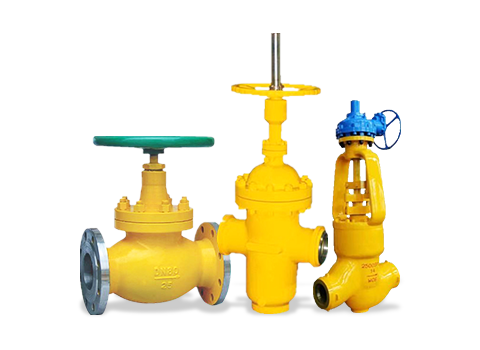
Product Overview:
Liquefied gas valve is a device used to control and regulate the flow of liquefied gas. It mainly includes two types: liquefied gas globe valve and liquefied gas balloon valve. Liquefied gas valves have certain characteristics and application ranges in terms of structure and function.
The opening and closing component of a liquefied gas shut-off valve (also known as a liquefied gas valve) is a plug shaped valve disc, with a sealing surface that is flat or conical. The valve disc moves in a straight line along the centerline of the fluid. The movement form of the valve stem includes a lifting rod type (the valve stem is lifted and lowered without the handwheel lifting), as well as a lifting rotating rod type (the handwheel rotates and lifts together with the valve stem, and the nut is set on the valve body). The bellows globe valve is only suitable for fully open and fully closed, and is not allowed to be adjusted or throttled.
Product features:
Small work schedule and short opening and closing time.
Good sealing performance, low friction between sealing surfaces, and long service life.
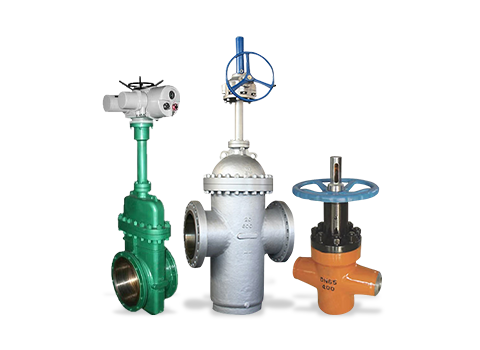
Product Overview:
Oilfield valves are specialized valves used in oil and gas extraction, gathering, transportation, refining, and other processes. They need to adapt to extreme working conditions such as high pressure, high corrosion, solid particles (sand, rust), and flammability and explosiveness (methane, hydrogen sulfide). Its core design needs to meet industry standards such as API and NACE.
Applicable medium:
Water, oil products, natural gas, etc
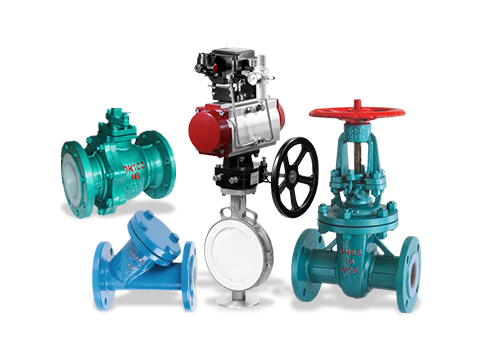
Product Overview:
Anti corrosion valve is a control component in pipeline fluid transportation system, which is used to change the cross-sectional area of the passage and the direction of medium flow. It has functions such as diversion, cutoff, regulation, throttling, check, diversion or overflow. Valves used for fluid control range from the simplest globe valves to various valves used in extremely complex self-control systems, with a wide variety of varieties and specifications. The nominal diameter of valves ranges from extremely small instrument valves to industrial pipeline valves with a diameter of up to 10m. Valves can be used to control the flow of various types of fluids such as water, steam, oil, gas, mud, various corrosive media, liquid metals, and radioactive fluids.
Manufacturing standards: ANSI, API, DIN, BS, JIS, GB, etc
Application scope: The product is mainly used in highly corrosive working conditions such as chemical, petroleum, pharmaceutical, environmental protection, and marine engineering to ensure the safe operation and service life of pipeline systems.
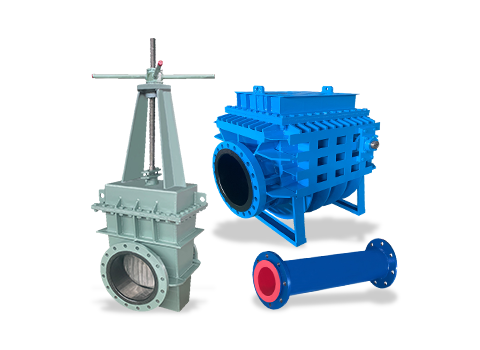
Product Overview:
Rubber lined products refer to a composite structure of "metal strength+rubber corrosion resistance/wear resistance" formed by lining a layer of rubber material on the surface of a metal substrate (such as carbon steel, cast iron) and firmly bonding the rubber with the metal through vulcanization process.
Baburd's professional rubber process includes 22 production processes, from formula design to vulcanization. Among them, the vulcanization process includes 37 production processes, from film preparation to finished product storage or assembly. We have professional rubber production and processing equipment, as well as vulcanization equipment, to ensure the high quality of our products. Standardized process operations guarantee the qualification rate of our finished products. Before the finished product is produced, the adhesion, surface quality of the lining adhesive, and thickness of the lining adhesive will be tested to ensure that the output of the finished product meets the qualified standards.

Product Overview:
The working principle of the hose valve (clamp valve) is to squeeze the internal hose through manual, electric, pneumatic, or hydraulic driving methods to achieve the function of switching and adjusting. Its characteristic advantage is that the fully permeable elastic hose has no gaps or dead corners, avoiding turbulence and wear inside the hose; When fully closed, it ensures bidirectional zero leakage closure, and the rubber hose and pipeline system are self-contained. Each opening and closing operation can be self-cleaning without blockage or dirt production. The production process of rubber hoses is divided into two types: compression molding and pure handmade. The materials used include natural rubber (black rubber), LAD special rubber (LNT), EPDM, nitrile rubber, etc. Rubber formula hoses with different properties can be customized for different working conditions, including non-standard, reduced diameter, variable diameter, through diameter, and thickened hoses.
Application scope: Mining, chemical, power, petroleum, environmental protection and other industries.

Product Overview:
Metallurgical valves are valves designed for the smelting and processing of steel and non-ferrous metals, and need to adapt to extreme working conditions such as high temperature, high pressure, solid particle content, strong erosion, and flammability and explosiveness.
Nominal diameter: DN10-4000mm
Work pressure: 0.25-10.0MPa
Working temperature: -196 ℃~1350 ℃
Product materials: ductile iron, carbon steel, low-alloy steel, duplex steel, stainless steel, chromium molybdenum steel, special alloys, etc
Application scope: Widely used in industries such as power plants, nuclear power, petroleum, chemical, thermal, natural gas, military, municipal, metallurgical, construction, pharmaceuticals, papermaking, coal mining, cement, sewage, environmental protection, energy conservation, etc
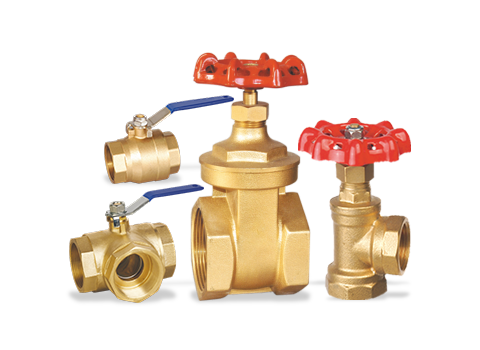
Product Overview:
Copper valves, which are valves cast with copper, belong to industrial parts and were first developed and manufactured in Ningbo, Zhejiang Province, China. In the early 1980s, Ningbo, Zhejiang took the lead in developing manufacturing processes, changing the history of long-term use of cast iron valves in China. The sand casting process was initially adopted in the manufacturing process, and in the early 1990s, it was changed to forging process. By the beginning of the 21st century, China had developed into the world's center for copper valve manufacturing.
Copper valve is a valve made of copper alloy as the main material, which utilizes the corrosion resistance, thermal conductivity, electrical conductivity, and good processability of copper and is suitable for various precision fluid systems.

Product Overview:
Needle type instrument valve is a valve used for precision fluid control and is a key component in instrument piping systems. Its core feature is the use of a "needle shaped valve core" - the valve core is a sharp conical shape that can be accurately inserted into the valve seat, and fine control of fluid flow and pressure can be achieved through small opening adjustment. At the same time, it has excellent sealing performance and is suitable for scenarios with high precision and sealing requirements such as instrument measurement and industrial control systems.
Nominal pressure: PN2.5, PN4, PN6.4, PN16, PN32
Nominal diameter: DN5 to DN25mm
Applicable media: various non corrosive or corrosive media such as oil, water, gas, etc
Applicable temperature: -20 ℃~+440 ℃, -70 ℃~-240 ℃, ≤ 540 ℃, ≤ 570 ℃, etc
Manufacturing materials: 20 #, 1Cr18Ni9Ti, 304, 316, 316L, 12Cr1Mov, etc

